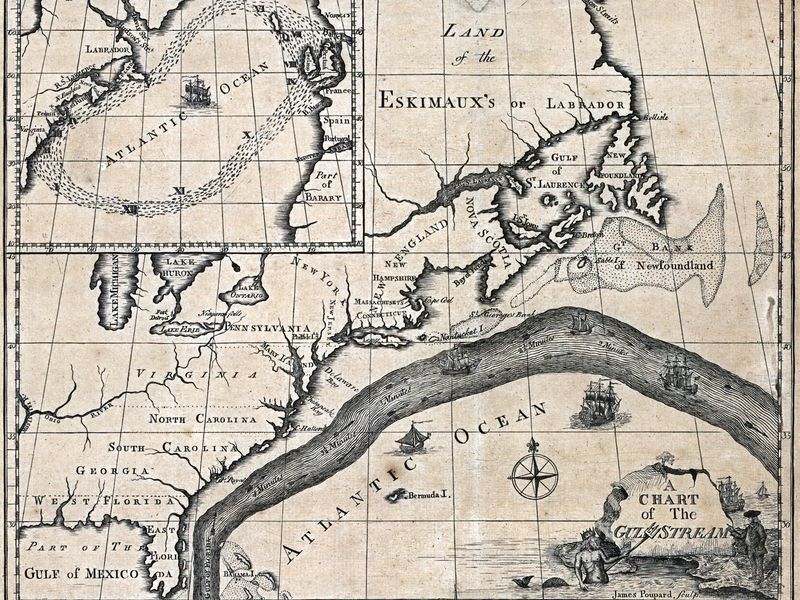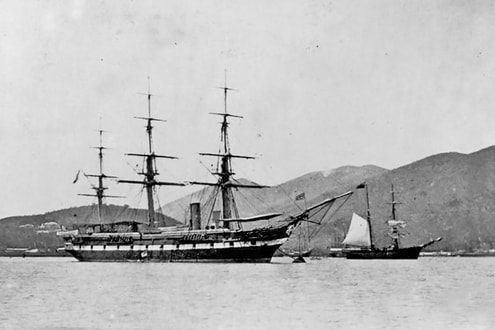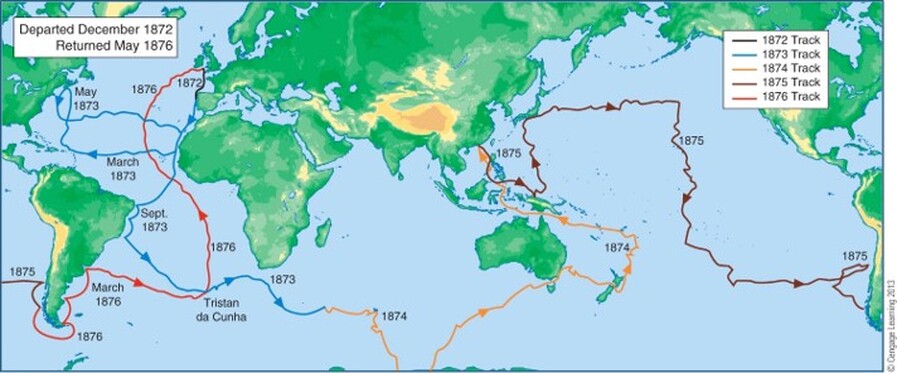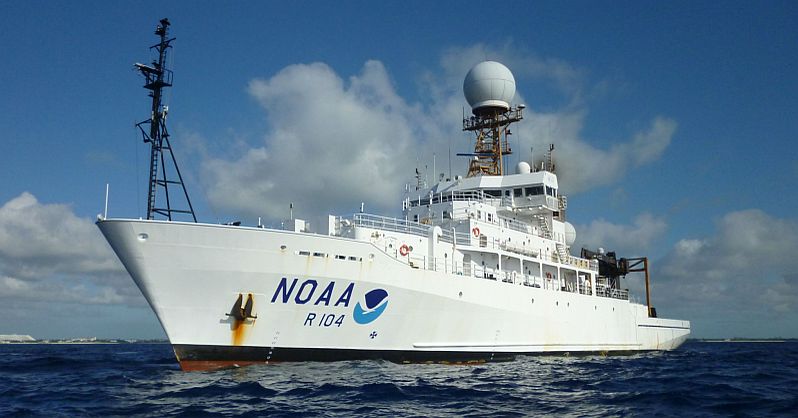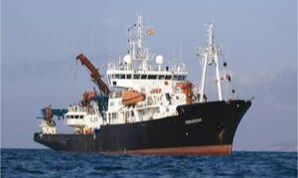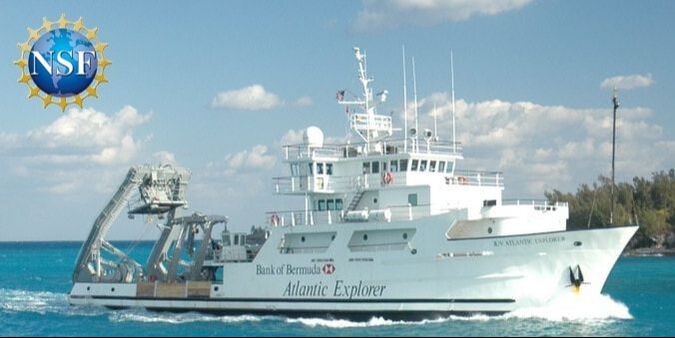|
Oceanography >> The World Ocean >> History of Oceanography
|
1.2 - History of Oceanography
Objectives:
- To know the history of ocean science.
- To know the most famous of the oceanographic institutions.
The earliest studies of the oceans were carried out by seafarers as they voyaged across oceans. From the Phoenicians, Polynesians and Europeans sailors have always been in awe of the sea. It can be a dangerous place, unforgiving of mistakes. Countless ships have been lost at sea due to storms, uncharted rocks, disease, malnutrition and navigation errors. Sailors would have noticed the tides, currents and waves very early on and looked for patterns and understanding of how they worked. As they voyaged farther afield they would have noticed changes in the temperature and fish that lived there. One of the earliest discoveries was the northwards flowing Gulf Stream between Bermuda and America. This was famously recorded by Benjamin Franklin during one of his transatlantic crossings.
In the east, the Chinese explorer Zheng He led a huge fleet to explore the South China Sea and the Indian Ocean, reaching the coast of Africa, where he may have encountered the African and Arab trading ships of the Red Sea and Arabian Sea. The Polynesians explored the Pacific by navigating using a careful study of wind, stars and wave patterns. But it was during the period of European expansion that navigators really started to take great care over the surveying and production of accurate charts. Possibly one of the most famous and prolific was Captain James Cook of Whitby, who covered a huge amount of the world during his three voyages. That he did so with very little loss of life was a testament to his scientific approach to navigation and nutrition. Sadly, by the time he had arrived at the Friendly Isles (Hawaii), he had rather lost his skills or patience with dealing with the various indigenous peoples of the lands that he had discovered and was brutally killed on a beach. Or maybe they had seen the writing on the wall and were correctly fearful of european colonialism? By the late 1800s, peace finally ruled in Europe and the Royal Navy 'ruled the waves'. So, the age of a more systematic approach to science was born and the British commissioned the world's first purely scientific expedition to study the oceans of the world.
|
HMS Challenger was a converted sloop-of-war that became the world's first research ship. She circumnavigated the world taking measurements of depth, temperature, salinity as well as recording currents and biological life. Her five year mission was inspiring. She visited Bermuda in 1873 and discovered the shallow platform to the south west that still bears her name.
She discovered the deepest part of the ocean, the Challenger Deep, which is part of the Marianas Trench in the Indian Ocean. She was broken up for scrap in 1921 and only her figurehead survives and is on display at the entrance to the National Oceanography Centre in Southampton (NOCS). The shuttle Challenger was named after her. Bernews Article - well worth a read. |
The US also sent expeditions out to study the oceans, Matthew Maury compiled an atlas of ocean currents and winds, which was of vital importance to the navy and mariners in general.
Since the Challenger expedition there have been many more research voyages and ships built. Some of the more famous were:
Since the Challenger expedition there have been many more research voyages and ships built. Some of the more famous were:
- RRS Discovery which carried Scott to the Antarctic and is now a museum ship in Dundee, Scotland
- HMS Erebus and HMS Terror, old bomb vessels that were converted into arctic expedition ships. Famously lost during the Franklin expedition to discover the North West Passage. The TV series The Terror is based on this tragic tale.
- HMS Beagle carried Charles Darwin to the Galapagos Islands, which played a major role in his Theory of Evolution.
- The Fram - a rather ungainly looking ship that was designed to ride up onto the ice and crossed the Arctic whilst atop the ice pack.
- The Calypso, a converted minesweeper that carried Jacques Cousteau on his many adventures around the world.
Despite the fairly large number of research ships around the world, they are insignificant to the sheer size of the ocean and expensive to maintain and run. So in the past 30 - 40 years or so there has been an explosion in the usage of both robots and remote sensing by satellites. It is a growth area and ideas such as Argo Floats, Sail drones and gliders are still being developed.
There are a wide variety of world famous research institutions that have grown up over the years. This a brief list of some of the most famous:
- Woods Hole Institution - Falmouth MA (USA)
- National Oceanography Centre (NOCS) - Southampton (UK)
- Scripps Ocean Institute, La Jolla, CA (USA)
- Rutgers University, New Jersey (USA)
- University of Hawaii, Honolulu, HI (USA)
- BIOS, St George's, Bermuda
Activities:
- Choose a famous voyage from history and write a brief article in your own words what the voyage achieved and why was it important.
|
| ||||||
OceanXplorer - a huge new research ship. NY Times 18 Sept 2020
Robot ship Transatlantic - BBC News 18 Sept 2020
